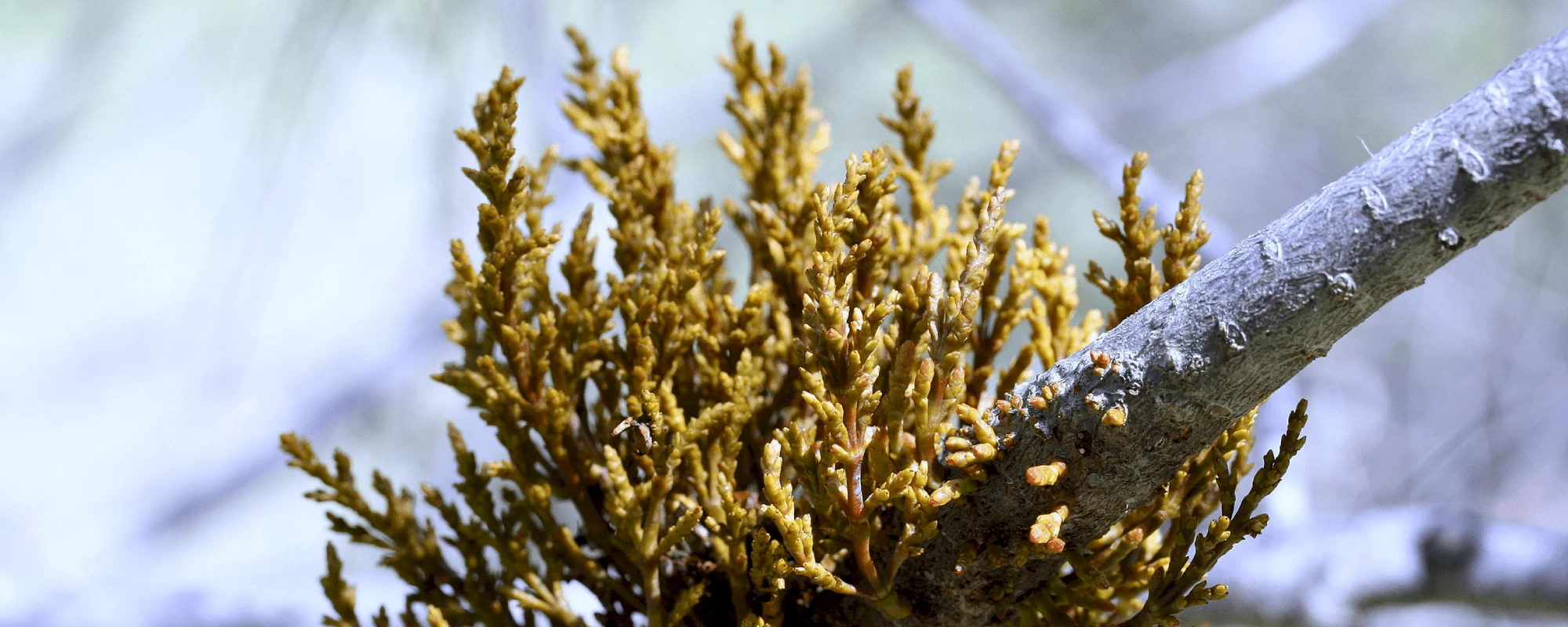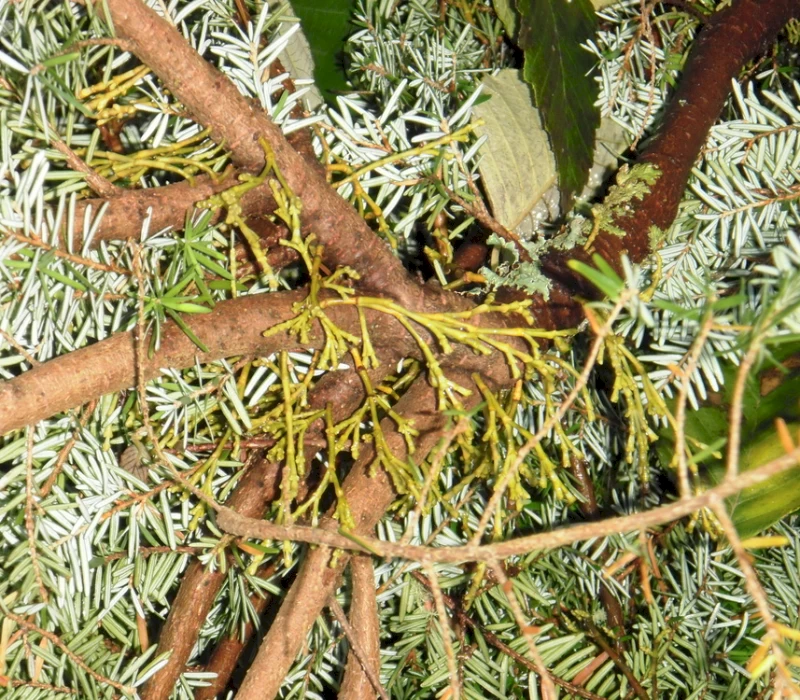Dwarf Mistletoe
Dwarf mistletoe is a fascinating plant that has been known for centuries due to its interesting features and effects on its host trees. This parasitic plant is commonly found in coniferous forests and can cause significant damage to trees. In this blog, we will discuss the characteristics, life cycle, and effects of dwarf mistletoe on trees.
Dwarf mistletoe belongs to the Viscaceae family and is found in many regions of the world. The plant is a hemiparasite, which means that it obtains some of its nutrients from its host tree but can also photosynthesize on its own. Dwarf mistletoe typically grows on coniferous trees, such as pines, firs, and spruces, and can cause significant damage to the host plant.
Dwarf mistletoe has an interesting life cycle that begins with a sticky seed that is dispersed by the wind. Once the seed lands on a tree branch, it releases an enzyme that allows it to penetrate the bark and grow into the tree's tissues. The plant then establishes a connection to the host tree's vascular system and begins to extract nutrients and water from the tree.
As dwarf mistletoe grows, it forms a structure called a shoot, which emerges from the tree's branches. The shoots of dwarf mistletoe are distinctive in appearance and can easily be recognized by their swollen, knobby shape. The shoots produce flowers, which are small and inconspicuous, and these flowers are followed by fruits that contain new seeds.
Dwarf mistletoe can have significant effects on its host tree, including reducing growth and productivity, altering the tree's physiology, and increasing the tree's susceptibility to other diseases and pests. The plant can also cause the tree's branches to become deformed, and in severe cases, the tree may die.
There are several methods for managing dwarf mistletoe, including pruning, using chemicals to kill the plant, and removing infected branches. However, prevention is often the best strategy, and forest managers may use techniques such as planting dwarf mistletoe-resistant tree species, reducing tree density to limit the spread of the plant, and maintaining forest health through appropriate management practices.
In conclusion, dwarf mistletoe is a fascinating plant that has unique features and can cause significant damage to its host trees. Forest managers and researchers are constantly working to better understand this parasitic plant and develop effective strategies for managing its impact. By understanding the life cycle and effects of dwarf mistletoe, we can work to maintain healthy forests and ensure the longevity of our valuable timber resources.





